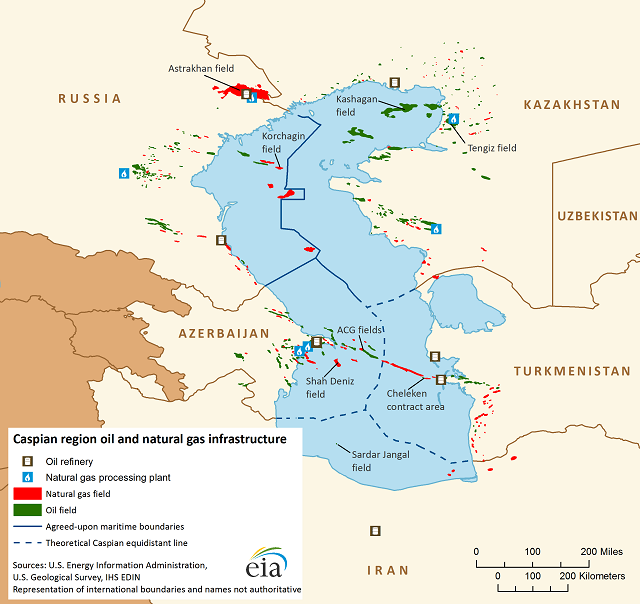[Exclusive] Kazakhstan is Ready to Headline Offshore
According to industry sources, Kazakhstan’s proven onshore and offshore reserves are estimated to be 4.8 billion tonnes or more than 35 billion barrels. In addition to this, there could be around 17 billion tonnes worth of oil in the Kazakh section of the Caspian Sea.
The major players in the Caspian offshore sector are Dragon Oil and Petronas in Turkmen waters and Gazprom and Lukoil in Russian waters. Whereas previously it had a monopoly, the national oil and gas company of Kazakhstan (KMG) has been concentrating its efforts on select projects, while selling off stakes in other projects to international oil majors – Chevron now holds a 50 percent stake in the Tengiz onshore field, for example.
GAC provides shipping, logistics and marine services to its Caspian operating customers supported by a fleet of 30 specialized vessels, and Jan Jiyenkulov, general director GAC Kazakhstan, says the development of the Tengiz, Karachaganak and Kashagan fields over the coming years will really establish Kazakhstan on the world oil map, particularly with investment in infrastructural growth in support of the developing needs of the oil and gas industries.
“Kazakhstan is land-locked and lies a great distance from international oil markets. The lack of access to a seaport makes the country dependent mainly on pipelines to transport its products to world markets. It is also a transit state for pipeline exports from Turkmenistan and Uzbekistan. Neighbors China and Russia are key economic partners and provide sources of export demand and government project financing.”
The Kashagan field is thought to be the largest known oil field outside the Middle East and the fifth largest reserve in the world. It is located off the northern shore of the Caspian Sea, near the city of Atyrau. The field is being developed by the North Caspian Operating Company (NCOC) consortium and is thought to have recoverable reserves estimated at around 11 billion barrels. The timetable for production start up has been pushed back to late this year, but as this was originally due to commence some eight years ago, there are no definite guarantees.
The development of Kashagan and other future projects requires significant expansion of Kazakhstan's export capacity in order to meet growing demand. “Plans have been drawn to develop a 600,000-barrel per day capacity onshore pipeline from Eskene in western Kazakhstan to Kuryk on the Caspian near Aktau, where a 760,000-barrel per day oil terminal is to be built,” says Jiyenkulov. “This project will also include a maritime link to Baku, Azerbaijan, new port facilities, and a transfer in Baku, where the crude oil will be put into an expanded pipeline to Turkey. KCTS is still only a proposal and given the size of the project, it will likely be at least 2023 before it is completed.”
Other options to improve the support infrastructure for the oil and gas industry in Kazakhstan are to increase the transportation capacity to China and other major importers.

